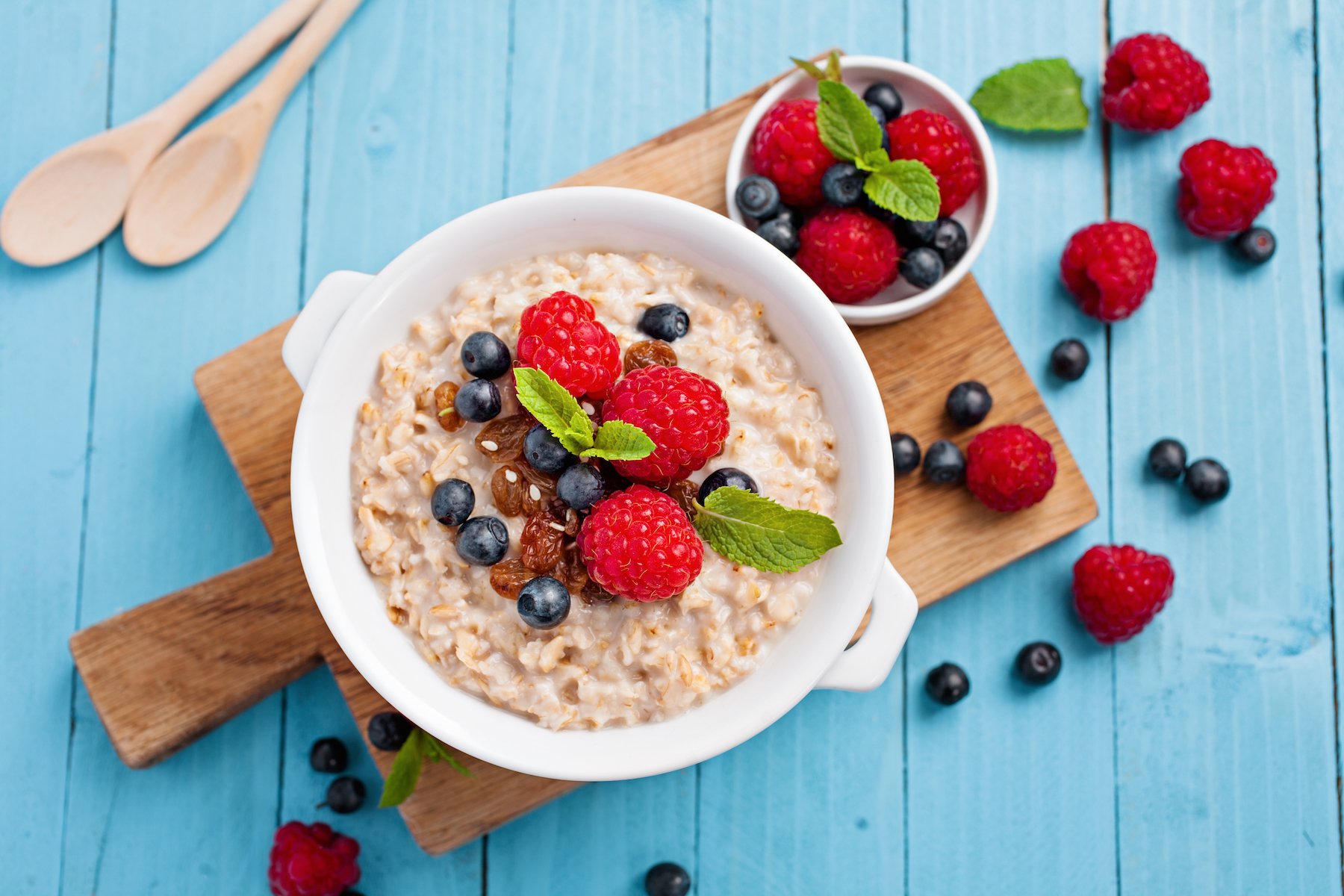What you eat has a powerful impact on your metabolic health. Nutrient-dense whole foods supply energy to your cells, and provide molecular instructions to your body to help it repair tissues, fight infection, produce hormones, and stimulate bone and muscle growth. The compounds in foods can also activate specific genes that protect against inflammation and build immunity. Eating a diverse, whole food diet is critical for building a metabolically healthy body.
There are certain foods, however, that jeopardize your metabolic health by spiking blood sugar, raising levels of cholesterol and triglycerides, or simply adding too many calories devoid of essential nutrients. In addition, some foods contain chemical additives and added sugars that promote inflammation. The typical American or “Western” diet is filled with them, and many experts believe that plays a key role in our nation’s metabolic health crisis.
It’s important to note that metabolic health is about long-term trends, not single meals. Your body can adapt to the occasional fast food meal or high-carb food. But how those meals affect us—spiking our blood sugar or leaving us feeling fatigued—is essential feedback that helps us avoid unhealthy trends or repeated behaviors over time.
While nutrition is highly individual, and not everybody will react the same to foods, if you’re looking for a way to simplify your diet and reduce or cut out some of the most harmful foods, these five categories are an excellent place to start.
#1: Sugar (in all its forms)
There are good reasons why some experts advocate regulating sugar in the same way we regulate alcohol. Repeatedly eating too much of any kind of sugar can cause several forms of damage to the body. Whether consumed in “natural” foods such as honey, fruit, or milk, or as added sugar, your body breaks down the carbohydrates from food into smaller sugar molecules (such as glucose, galactose, and fructose). Glucose is then sent directly into the bloodstream. There, it triggers the pancreas to release insulin, which shuttles glucose into your cells for immediate fuel, or into your muscle or fat cells for storage, where it becomes glycogen, so that your body can call upon it when circulating glucose is low. Foods high in sugar and carbohydrates, especially in the absence of fiber, protein, and fat, tend to cause sharper elevations in blood sugar and subsequent insulin responses that can be damaging over the long term when eaten frequently. Fructose impacts your body differently, as it does not raise blood sugar or trigger insulin release immediately, but it can still be damaging. Fructose is metabolized in the liver, where it’s converted to fat and stored.
A 2018 systematic review and meta-analysis found that consuming added or naturally-occurring sugars increased inflammatory markers in the body, a precursor to chronic disease. And new research indicates that both sucrose and fructose decrease insulin sensitivity and increase fat in the liver, conditions that can eventually lead to insulin resistance and nonalcoholic fatty liver disease, respectively.
It’s wise to limit your consumption of sugar overall, but avoiding added sugars as much as possible is one way to limit overall intake, which can help improve your long-term health. Today it’s common to ingest up to 66 pounds of added sugars per year. On average, the US population still consumes more than 300% of the recommended daily limit of added sugar (which is itself too high). A diet high in sugar (which is typically high in added sugars, particularly high-fructose corn syrup) can lead to health problems such as:
- Obesity: Besides providing excess calories, high sugar consumption has been linked to changes in the gut microbiome that cause systemic inflammation and lead to obesity. Animal research suggests this may be due to increased lipopolysaccharide (LPS), a breakdown product of gut bacteria that appears to alter food intake, promote fat accumulation, and impair satiety signaling.
- Prediabetes and Type 2 diabetes: Chronically high blood sugar can lead to insulin resistance, where your body becomes less efficient at using insulin to shuttle glucose into cells. That, in turn, leads to higher fasting blood sugar levels that can reach the prediabetes stage—already a sign of metabolic dysfunction—or eventually Type 2 diabetes.
- Heart Disease: Added sugar raises blood pressure and artery-clogging triglycerides, even in healthy-weight people. This may be because consuming too much fructose increases liver fat, which results in higher triglycerides and cholesterol. Fructose metabolism in the liver also increases the production of urate. This substance can decrease nitrous oxide synthesis and impair the function of endothelial cells in the heart, resulting in constricted blood vessels and, in turn, increased blood pressure.
The primary sources of added sugars in the American diet are sweetened beverages (including sports drinks, coffee, and tea), desserts, sweet snack foods, and candy. However, sugar is also in many foods you wouldn’t expect, such as salad dressing, condiments, sauces, bread and sandwiches, pizza, soup, energy bars, and yogurt.
How to avoid: Always check nutrition labels and ingredients lists for added sugars on packaged foods, and keep in mind that foods labeled “low-fat” can have even more sugar than their full-fat counterparts.
#2: Wheat Flours
Wheat flours are another form of easily-digestible carbohydrates. Unlike whole grains, which retain the germ, bran, and endosperm of wheat, wheat flours are milled, a process that removes the germ and bran. As a result, they lack the fiber, fat, and other nutrients that occur naturally in whole grains.
This is true even of whole wheat flour. While it does contain some fiber (it’s added back after milling) to help slow digestion slightly, whole wheat flour, just like all wheat flours—including bread flour, pastry flour, all-purpose flour, and cake flour—has a high glycemic index (GI), a measure of how quickly and how much a food raises your blood sugar. That rapid digestion means it will likely spike your blood sugar levels. According to a 2021 systematic review comprising observational studies involving more than 36,000 people, diets composed of foods with a high GI increase the risk of metabolic syndrome—a cluster of metabolic risk factors that, together, are associated with a significantly increased risk of Type 2 diabetes and cardiovascular disease.
How to avoid: A good option is to substitute all or most of the wheat flour in your recipes with almond, hazelnut, or coconut flours. (Chickpea is another common alternative flour but can cause glucose spikes in some people.) These flours are lower in carbs and have a less pronounced effect on your blood sugar levels. They’re also easy to make yourself in a food processor. Also, limit packaged snacks and bread products with wheat flour as a main ingredient. According to Levels data, even those made with flour alternatives can spike blood sugar in many people, so be aware of your body’s response.
#3: Ultra-Processed Foods
More than 70 percent of foods sold in grocery stores in the U.S. are ultra-processed, research shows. These foods include frozen meals, packaged snacks, granola bars, sodas, and cereals that contain few whole food ingredients, have little nutritional value, and are full of fat, sugar, sodium, and other additives and preservatives to improve texture or flavor or extend shelf-life. Especially dangerous are hot dogs, deli meats, and bacon. In a meta-analysis of data from three studies that examined dietary habits and health outcomes of around 200,000 men and women over 14 to 28 years, researchers observed that consumption of unprocessed and processed red meats—particularly those high in nitrites and sodium—was positively associated with risk of Type 2 diabetes, with relatively higher risk associated with processed meats. In one study, consuming these ultra-processed foods doubled diabetes risk for the highest consumption versus the lowest consumption.
Ultra-processed foods may also contain trans fats created during the manufacturing process. Despite research showing trans reduced HDL cholesterol and increased inflammation and that a high intake is associated with Type 2 diabetes and cancer, they were once widely used in many packaged foods like cakes, cookies, breads and crackers, ice cream, and snack foods. However, trans fats are now acknowledged as so dangerous that the Food and Drug Administration recently banned adding them to foods, predicting that doing so could “prevent thousands of heart attacks and deaths every year.” But some countries are laxer, and trans fats may still be lurking in foods sold in the U.S. Always read ingredient labels and look for “trans fats” or “partially hydrogenated fats,” which indicates their presence. Avoid foods that contain them.
Ultra-processed foods also often contain refined wheat flour and added sugar, which may spike blood sugar, disrupt the gut microbiome and promote inflammation. People who eat fewer processed foods tend to have healthier gut microbiomes and be more metabolically fit.
How to avoid: Reduce consumption of ultra-processed foods and instead choose foods in their whole, natural form or minimally processed, such as frozen fruits or vegetables and canned beans. Also, look for processed foods like canned fish or roasted nuts containing whole foods and fewer problematic ingredients. When buying frozen meals, pick those with no added sugar or trans fat, less than 600 milligrams of sodium, and lots of vegetables. For example, instead of packaged cereals, opt for grain-free granola or chia pudding.
#4: Vegetable Oils and Refined Seed Oils
Many refined vegetable and seed oils are high in omega-6 fats, which have been linked to poor metabolic health in some observational research, especially when consumed frequently. The omega-6 fatty acid that has metabolic health experts most troubled is linoleic acid. Although it has long been considered essential for health, many researchers are beginning to question linoleic acid’s benefits, pointing to animal studies showing it causes insulin resistance. There is also some evidence that a diet high in linoleic acid increases inflammation, elevates the risk of cardiovascular disease, and stimulates appetite. Some researchers suspect a causal link between high linoleic acid consumption and obesity and diabetes.
Oils containing more than 20% linoleic acid include:
- Safflower OIl
- Grapeseed Oil
- Sunflower Oil
- Corn OIl
- Cottonseed Oil
- Soybean Oil
- Walnut OIl
- Sesame Oil
- Rice Bran Oil
- Peanut OIl
- Canola oil
How to avoid: These kinds of refined seed oils containing linoleic acid are ubiquitous in ultra-processed and packaged foods, and until we know more, it might be wise to look for foods with avocado, olive, or coconut oils in their ingredients lists and use small amounts of these oils as well as animal fats like butter and ghee when cooking. Also, consider adding MCT oil, so-called because it contains medium-chain triglycerides, to your diet as a supplement. MCT, a highly metabolized fat typically made from processing coconut or palm kernel oil, may offer additional health benefits. Animal studies show it may improve gut health, aiding metabolism; another shows it promotes weight and fat loss; further research finds it may control hunger. Whisk MCT oil into salad dressing, blend it into smoothies, or stir it into your coffee.
#5: Fast Food
By their very nature, most fast foods are ultra-processed (see above) and loaded with refined flours, fats, salts, and hidden sugars—often engineered to be potentially addictive. According to CGM data from Levels users, McDonald’s and Chick-Fil-A are two of the worst foods for blood sugar spikes and no wonder. Whether you choose a chicken sandwich or a cheeseburger, you’re getting a dose of added sugar in every bite (you’ll find it in the buns, chicken, and condiments). Recent research from Asia reveals what happens when a population starts rapidly increasing the amount of fast food in their diets: The diabetes rate skyrockets. A 2015 research review directly implicated frequent fast-food consumption with abdominal fat gain, impaired insulin function, and systemic inflammation: key markers for metabolic disease.
And consider this: The raw ingredients used to make cheap fast food are rarely, if ever, sourced from producers whose primary concerns are organic, sustainable, humane, or ethical farming and husbandry practices—and that can have important implications for your health. A recent research review linked organic food consumption to better metabolic health, including reduced incidence of high BMI and metabolic syndrome. The study authors say longer-term studies on the health benefits are needed to determine why this is the case,
How to avoid: If you’re traveling and have no option other than fast food, seek out Chipotle, which provides detailed nutrition facts online and uses primarily organic, locally-sourced foods, or Sweetgreen, with its healthful options and whole foods ingredients lists.








